On the Utilization and Influencing Factors of Internet + Nursing for homebound Elderly Patients with Chronic Disease
Xiaoli Wang 1, Suding Fei 1, Ning Sun 1, Mingjun Chen 2, Juan Li 3, Binglei Li 2
Ningbo College of Health Sciences, China.
Ningbo City First Hospital, China
Ningbo medical center Lihuili Hospital, China
*Corresponding author: Xiaoli Wang, School of Nursing, Ningbo College of Health Sciences, No.51, Xuefu Road, Ningbo Higher Education Park (South District), 315000, Zhejiang, China.
Received: 11 October 2023; Accepted: 20 October 2023; Published: 16 November 2023
Article Information
Citation:
Xiaoli Wang, Suding Fei, Ning Sun, Mingjun Chen, Juan Li, Binglei Li. On the Utilization and Influencing Factors of Internet + Nursing for homebound Elderly Patients with Chronic Disease. Fortune Journal of Health Sciences. 6 (2023): 457-463.
View / Download Pdf Share at FacebookAbstract
Aim: The purpose of this paper is to investigate and analyze the current application states of "Internet+" nursing for elderly patients with chronic disease and identify the factors that influence its usage.
Design: This is a cross-sectional observational study.
Methods: A general information questionnaire and an internet + nursing questionnaire were developed.a total of 738 elderly patients with chronic disease from six general hospitals in Zhejiang were randomly sampled and statistically analyzed.
Rresults: Overall, 287 people (38.92 %) were aware of Internet + nursing, with 132 (17.89 percent) having used it, while 286 people (63.42 %) did not use it. Among those, 63.42% were unaware of it, and 43.9 % had no idea how to use a smartphone. The study reveals a high demand for "Internet+" nursing. Some factors, such as high education, high income, more hospitalizations, multiple chronic diseases, contracted family doctor service, training received, and smartphone use, were found to promote the use of Internet + nursing. In summary, there is also a high demand for elderly patients with chronic diseases, but the usage remains low, including a mismatch between supply and demand.
Patient or Public Contribution: Our results help to strengthen public support for elderly patients suffering from chronic diseases receive continuous, convenient, accessible, and high-quality care services.
Keywords
dermatofibrosarcoma protuberans, metastasis, fibrosarcomatous, soft tissue tumour, fibroblast
Article Details
1. Introduction
By the end of 2021, the number of elderly people in China is 267 million, accounting for 18.9% of the national population. The prevalence of chronic diseases (cardiovascular diseases, diabetes, tumors, chronic obstructive pulmonary diseases, etc.) in the elderly population is above 75%, featuring a long disease course and a high rate of disability and death. The benefit of “internet + ”nursing is that it allows patients to receive further health care via the Internet after discharge, which has become a hot spot for research [1, 2]. In order to improve the level of elderly services, Zhejiang regions have endorsed internet+nursing service [3]. However, it is not optimistic that the practice suffers from a lack of process management, the need for digital services optimization, and a lack of continuity of information and relationships [4]. In view of this, the purpose of this paper is to investigate the usage and needs of Internet+nursing for elderly patients with chronic diseases in this region and propose relevant countermeasures to promote the rapid development of Internet+nursing services.
2. Method
2.1 Objects
In this study, a whole-group random sampling method was used to conduct the survey [5]. Elderly patients aged 60 years and above with chronic diseases, who were discharged from the departments of respiratory medicine, cardiology, endocrinology, oncology, neurology, and orthopedics in six tertiary hospitals in Hangzhou, Ningbo, and Jinhua from February to October 2022 were sampled for the questionnaire survey. In this paper, 740 elderly people were surveyed, of which there were 2 invalid questionnaires and 738 valid questionnaires, with an efficiency rate of 99.73%.
2.2 Survey instruments
(1) General situations questionnaire: according to the literature [6], a general situations questionnaire was developed, and the questions covered the elderly’s age, gender, marital status, residence, education, income, diseases suffered and duration, number of hospitalization, and type of medical insurance of the elderly.
(2) Questionnaire on the demand and usage of Internet+ continuity of care: According to the implementation of Internet + nursing in this region, the questionnaire was designed and validated by experts to obtain a Cronbach.? efficient of 0.903, with high scale reliability.
2.3 Data Collection Method
In each hospital, two nurses were selected as surveyors who were trained and worked on a voluntary basis.
2.4 Statistical Methods
EpiData 3.1 data management software was used for data entry. With the help of SPSS 19.0 statistical software, descriptive analysis was performed in this paper to regress the usage of internet+nursing and regression analysis was used for the influencing factors, P<0.05 means the di?erence was statistically signi?cant.
3. Discussion
3.1 General situation of elderly patients with chronic diseases
According to the general situation questionnaire, the data shows that out of the surveyed elderly patients with chronic diseases, 73 individuals (9.89%) were over over 80 years old, Additionally, 578 individuals (78.32%) had multiple chronic diseases,478 individuals (64.77%) had an education level below elementary school, 420 individuals (56.91%) had a disease duration of over 5 years, and 279 individuals (37.4%) had beem hospitalized more than 2 times. Feuthermore, 676 individuals (90.25%) lived with their spouses or children, and 576 individuals (78.05%) had a monthly income of less than 3,000 Yuan (Table 1).
Table 1: General information questionnaire
|
Items |
N (%) |
|
|
Age |
Over 60 |
359 (48.64) |
|
Over 80 |
306 (41.46) |
|
|
Over 80 |
73 (9.89) |
|
|
Gender |
Male |
306 (41.46) |
|
Female |
432 (58.54) |
|
|
|
Marriage |
540 (73.17) |
|
Widowed (single) |
198 (26.83) |
|
|
Education |
Primary school and below |
478 (64.77) |
|
Junior high school |
162 (21.95) |
|
|
Technical secondary school, |
98 (13.28) |
|
|
high school and above |
||
|
Condition |
Single |
160 (21.68) |
|
Multiple |
578 (78.32) |
|
|
Course of disease |
1-5 years |
318 (43.09) |
|
5-10 years |
282 (38.21) |
|
|
10 years or more |
138 (18.7) |
|
|
Number of hospitalization |
1 time |
462 (62.6) |
|
2 times |
189 (25.2) |
|
|
More than 3 times |
90 (12.2) |
|
|
Family care |
Spouse |
354 (47.97) |
|
Children |
312 (42.28) |
|
|
Nanny |
42 (5.69) |
|
|
In person |
30 (4.06) |
|
|
Medical insurance |
Urban residents’ medical insurance |
498 (67.48) |
|
Urban employee medical insurance |
66 (8.94) |
|
|
New rural cooperative medical insurance |
174 (28.46) |
|
|
Average monthly income |
<1000 |
138 (18.7) |
|
1000-3000 |
438 (59.35) |
|
|
?3000 |
162 (21.95) |
|
3.2 Usage of Internet+ nursing services
3.2.1 Survey of those who have enjoyed Internet+nursing services
According to the survey results, out of the chronically ill patients, only 132 (17.89%) had accepted intenet+nursing. among those individuals, 78 (59.09%) had used the internet for health consultation, and 59 (44.70%) had received post-discharge follow-up services. On the other hand, the least percentage of people received rehabilitation care and emergency care, with 20 (15.15%) and 12 (9.09%) respectively?Figure 1?
3.2.2 Survey on the channels of knowing about Internet+nursing
According to the findings of the study, out of the 287 people (38.89%) were aware of Intenet+nursing, 105 people (14.23%) learned about it after being discharged from the hospital, 87 people (11.79%) knew about it through their community, 58 people (7.86%) found out it through peer notification and 37 people (5.01%) came across it through network?Figure 2?
3.3 Reasons why elderly patients with chronic diseases did not choose Internet+Nursing services
Overall, the main reason for not accepting internet nursing services was the lack of knowledge about such services, with 63.42% of respondents stating this as their reason. The second reason, cited by 43.90% of respondents, was a lack of understanding about how to use smartphones and perform online consultations or reserve services through relevant apps. Additionally, 13.01% of elderly patients felt that they did not need the services. Some respondents also mentioned that they had difficulty navigating the online platforms and were unsure about how to use them effectively.
12.20% of elderly patients cited a lack of trust in technology and expressed concerns about the security of their personal information when using online nursing services. 11.38% of respondents indicated that they had difficulty accessing reliable internet connections in their area, making it challenging for them to use internet-based nursing services. Finally, 9.76% believe that Internet + nursing is not reimbursable by Medicare and costs extra. Another 4.88% believe that the nursing programs don’t meet their needs (Figure 3).
3.4 Survey on the demand situation of Internet + nursing
3.4.1 Demand for life care
The study revealed shopping and delivery services, maintenance and transportation were nearly 45%, home cleaning and nutritional meal preparation services was about 40%, personal hygiene nursing reached 25% (Figure 4).
3.4.2 Demand for medical nursing
The demand for medication guidance was the highest, with 68.29% of people asking for this service. This indicates that individuals are seeking guidance and support related to their medication management. Regular follow-up visits were the secondmost demanded service, also with 65.05% of people requiring these visits. Around 50% or more of people expressed a need for home rehabilitation, emergency assistance, assistance with referrals, and home nursing technical services. Lastly, the demanding for hospice nursing was over 40% (Figure 5)
3.4.3 Spiritual and cultural services
This Figure suggests that there is a higher demand for rights protection and law support among elderly patients with chronic diseases (63%). Additionally, the demand for cultural, sports, and entertainment services along with psychological counseling services was also significant among the elderly population. On the other hand, the demand for online courses appears to be relatively low, with less than 40% expressing interest (Figure 6).
3.5 Advantages of community-based family doctor contracting service
The survey results highlighted the advantages of convenient medication, exemption of registration fees, and free medical checkups reported by patients. However, the low percentages of patients receiving family-bed services and appointment referrals indicate areas for improvement in the healthcare provider's services?Figure 7?. It is important for the healthcare provider to address these shortcomings to enhance patient satisfaction and provide comprehensive and holistic care.
3.6 Factors influencing the usage of Internet + nursing for elderly chronic disease patients
The regression analysis conducted in this paper investigated the factors affecting the use of Internet + nursing by elderly people. The researcher collected data on several variables, including degree of education, number of hospitalizations, course of disease, income level, family doctor service, acceptance of training, and ownership of an intelligent mobile phone. After analyzing the data, the researcher found that all of these variables had a statistically significant effect on the use of Internet + nursing by elderly people (Table 2).
Table 2: Factors influencing the use of Internet + nursing in elderly patients with chronic diseases (P<0.05)
|
Items |
Regression coefficient |
t |
P |
VIF |
|
Degree of education |
0.07 |
2.16 |
0.033 |
1.09 |
|
Number of hospitalizations |
0.05 |
2.23 |
0.028 |
1.06 |
|
Course of disease |
0.07 |
2.08 |
0.04 |
1.34 |
|
Income level |
0.2 |
2.83 |
0.005 |
1.22 |
|
family doctor service |
0.32 |
3.6 |
0 |
1.13 |
|
Acceptance of training |
0.31 |
3.85 |
0 |
1.15 |
|
Intelligent mobile phone |
0.16 |
2.27 |
0.025 |
1.01 |
4. Discussion
4.1 Low awareness rate and low usage of Internet + nursing
Overall, 705 (95.53%) were willing to receive Internet + nursing service. However, it is worth noting that only 38.89% had prior knowledge about internet+nursing. Among those, one-third of them learned about it during hospitalization, another one-third learned it through community channels, the remaining one-third acquired it through peers or other channels. The majority of the 132 people (17.89%) who had experienced Internet+ nursing services were utilizing the Ask a Doctor feature as well as post-discharge follow-up services through messaging platforms like WeChat or QQ. The low usage of nursing apps can be attributed to a lack of awareness and knowledge about these apps among the general population, especially the elderly [7, 8]. Inadequate nursing delivery system also contributes to the low usage of assisted referrals. Since most elderly patients admitted to tertiary hospitals are less likely to require assisted referrals to other healthcare facilities [9]. Other reasons, Internet + nursing had the limitations to meet their needs, and made it difficult for them to be covered by health insurance [10, 11].
4.2 Mismatch between Internet + nursing and the diversified needs of elderly chronic disease patients
The need of elderly patients were ranked from highest to lowest, the order was medication guidance, regular follow-up visits, home rehabilitation, emergency rescue, assistance with referrals, home nursing technical services, and end-of-life nursing. However, the currently module settings were web-based consultation, psychological zone, and clinical nursing services. Besides, there were some imperative modules which had not built on internet, such as post-hospital follow-up, medication administration, rescue, referral, and hospice nursing. Basic life nursing for elderly patients were available by mobile apps or online platforms such as home nursing services. In addition, cultural, sports and entertainment information and disease-related online lectures were not displayed on App. So, there is a remarkable lack of Holistic Nursing services for elderly patients with chronic disease [12]. It is a long-term process for elderly people, nursing continuity including all kinds of internet+nursing contents is essential and critical to elderly [13, 14]. Therefore, it is necessary to target diverse internet+ nursing services to the different elderly patient with chronic disease.
4.3 Main influencing factors affecting the usage of Internet + nursing for elderly patients with chronic diseases
According to the study, older adults, who were accessible to the Internet, had a higher usage rate of Internet + nursing services than other older groups [15]. Those who could independently use medical nursing APPs were more willing to use Internet+ medical services. It is the conclusion that highly educated older adults were more likely to use internet service. Different kinds of internet+nursing which meeting the person’s needs are essential and critical, which can maintain physical and mental health, promote recovery from illness [16]. It is urgent to develop appropriate publicity and training programs with taking into account the literacy level of elderly patients with chronic diseases. Related community activities to old person and their families should be conducted during the patient’s first hospitalization or family doctor consultation, even from the senior centers or cultural centers in community.
5. Recommendations
5.1 Rely on the community to shift Internet + nursing to Internet+ continuity of nursing
Currently, most of the Internet + nursing services were based on tertiary comprehensive hospitals and were aimed to extend the management and service of tertiary hospitals to communities and families. High-quality medical nursing was delivered to the patients via the internet by providing medical consultation and home-based nursing technology services for elderly patients with chronic diseases. However, this practice had inadvertently bypass the medical staff of community hospitals and increased the burden of nursing staff in general hospitals; at the same time, the practice can neither provide continuous health consultation and nursing services nor meet the needs of chronic disease patients for long-term nursing, thus, the continuity of the nurse-patient relationship was not guaranteed. Therefore, considering the characteristics of elderly patients, we should promote internet+ nursing service on the premise that family doctor services were well accepted by patients, and devoted ourselves to building a continuous nursing service platform with the linkage of “hospital - community - family” [17].
Through this platform, medical and nursing resources of tertiary hospitals and community services are integrated to establish and maintain health records for elderly patients with chronic diseases and facilitate their access to medical nursing and referral. Also it is necessary to develop a comprehensive and suitable Internet + nursing APP for elderly chronic disease patients, which can unite multidisciplinary teams, construct continuity across nursing teams with family contracted doctors as well as community nurses as the core via the Internet. On this basis, elderly patients with chronic diseases can receive convenient, and continuous nursing.
5.2 Optimize and promote the application of the “Internet+” nursing service platform
Internet technologies such as cloud computing, big data and the Internet of Things are gaining increasing momentum, which has deepened the “digital divide” among older adults. This serves as a reminder that platform providers should continue to improve their Internet + nursing applications to meet the nursing requirements of older adults; at the same time, age-appropriate adaptations are required to resolve technical issues and maximize older adults' affinity to the mobile services [18]. Government departments should make health promotion efforts and launch incentive programs through a combination of online and offline channels such as hospitals, communities, television, and Internet media; it is necessary to conduct internet + nursing training for community-based homebound seniors and families so that seniors can go from knowing - to learning - to use the relevant app freely, so that seniors can fully understand the internet + nursing Apps.
6. Conclusion
Although Internet + nursing is currently booming in China, research is limited. Healthcare institutions should place a high priority on training patients on internet + nursing during hospitalization and improving patients’ usage of the service by actively initiating high-quality Internet + nursing services. The scope of this study was limited to the Zhejiang regions. In view of this, future studies will expand the study population to find more effective measures to forster Internet + nursing for elderly patients with chronic diseases in other regions. On this basis, application of Internet + nursing can be rapidly promoted, and thus the quality of nursing for elderly can be improved accordingly.
Conflict of Interest Statement
The authors have no conflicts of interest to declare.
Data Availability Statement
The data used to support the findings of this study are available from the corresponding author upon request.
Ethical Committee
The study was approved by the Ethics committee of the Ningbo College Health Science?Ethics Approval Number ,LLSC2023014?.
Funding Information
This work was supported by the Ningbo Municipal Bureau of Science and Technology, Public Welfare Project (2022S069)
References
- Ge YF, Wang LJ, Feng WM, Zhang BZ, Liu SL, & Ke YH. Challenges and strategic choices of healthy aging in China.J. Manag. World36 (2020): 86-96.
- Tian F, Xi Z, Ai L, Zhou X, Zhang Z, Liu J, et al. Investigation on Nurses’ Willingness to “Internet+ Nursing Service” and Analysis of Influencing Factors.Journal of Multidisciplinary Healthcare (2023): 251-260.
- Xue Y, Xu Z, Liu Q, & Chen X. Research on “Internet+” Community Elderly-care Service Model a Case Study of Changzhou. In2021 International Conference on Public Management and Intelligent Society (2021): 255-259.
- Sheng Z, Wang J, Sun K, Xu Q, Zhou H, Liu C, ... et al. Nurses' Attitudes Toward Internet-Based Home Care: A Survey Study.CIN: Computers, Informatics, Nursing39 (2021): 97-104.
- Wu Y, Ding Y, Hu C, & Wang L. The Influencing Factors of Participation in Online Timebank Nursing for Community Elderly in Beijing, China.Frontiers in Public Health9 (2021): 650018.
- Mao Y, Lin W, Wen J, & Chen G. Impact and efficacy of mobile health intervention in the management of diabetes and hypertension: a systematic review and meta-analysis.BMJ Open Diabetes Research and Care8 (2020): e001225.
- Jo TH, Ma JH, & Cha SH. Elderly perception on the internet of things-based integrated smart-home system.Sensors21 (2021): 1284.
- Fan Y, Ma Y, Zhang Y, & Sun C. A retrospective analysis of internet-based sharing nursing service appointment data. Computational and Mathematical Methods in Medicine (2022).
- Heponiemi T, Kaihlanen AM, Kouvonen A, Leemann L, Taipale S, & Gluschkoff K. The role of age and digital competence on the use of online health and social care services: a cross-sectional population-based survey.Digital health8 (2022): 20552076221074485.
- Chen CC, & Cheng SH. Care continuity and care coordination: A preliminary examination of their effects on hospitalization.Medical Care Research and Review78 (2021): 475-489.
- Lei L, Intrator O, Conwell Y, Fortinsky RH, & Cai S. Continuity of care and health care cost among community-dwelling older adult veterans living with dementia.Health Services Research56 (2021): 378-388.
- Facchinetti G, D’Angelo D, Piredda M, Petitti T, Matarese M, Oliveti A, & De Marinis MG. Continuity of care interventions for preventing hospital readmission of older people with chronic diseases: A meta-analysis.International journal of nursing studies101 (2020): 103396.
- Dyer SM, Suen J, Williams H, Inacio MC, Harvey G, Roder D, et al. Impact of relational continuity of primary care in aged care: a systematic review.BMC geriatrics22 (2022): 1-18.
- MA RM. Defusing THE Confusion: Concepts AND Measures OF Continuity OF Healthcare (2002).
- Gong Y, Zhou J, & Ding F. Investigating the demands for mobile internet-based home nursing services for the elderly.Journal of Investigative Medicine70 (2022): 844-852.
- Ma G, Hou J, Peng S, Luo L, Xu R, Liu Y, ... et al. Nurses’ Willingness and Demand for Internet+ home Care Services and Its Influencing Factors in Different Levels of Hospitals in China–A Nationwide Survey.Risk Management and Healthcare Policy (2022): 1395-1405.
- Guo X, Gu X, Jiang J, Li H, Duan R, Zhang Y, ...et al. A hospital-community-family–based telehealth program for patients with chronic heart failure: single-arm, prospective feasibility study.JMIR mHealth and uHealth7 (2019): e13229.
- Peng Y, Wan H, Hu X, Xiong F, & Cao Y. Internet+ Continuous Nursing Mode in Home Nursing of Patients with T-Tube after Hepatolithiasis Surgery.Computational and Mathematical Methods in Medicine(2022).
- de Boer D, van den Berg M, Ballester M, Bloemeke J, Boerma W, de Bienassis K, ... et al. Assessing the outcomes and experiences of care from the perspective of people living with chronic conditions, to support countries in developing people-centred policies and practices: study protocol of the International Survey of People Living with Chronic Conditions (PaRIS survey).BMJ open12 (2022): e061424.
- Zhao B, Wang W, Yi M, Lv H, Zhang X, Liu Y, et al. Nurses' perceptions of engaging in internet?based nursing services: A qualitative study based on three hospitals in China.Nursing Open (2023).

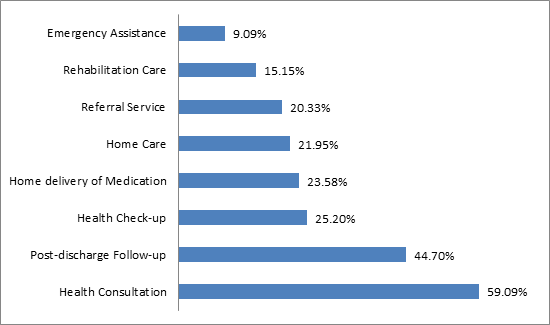
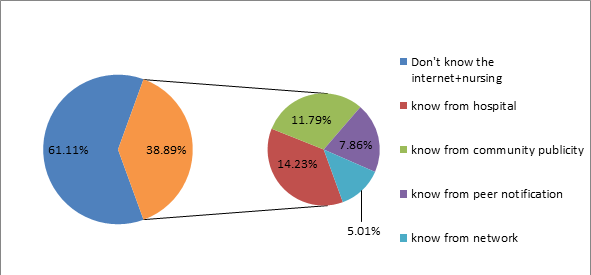
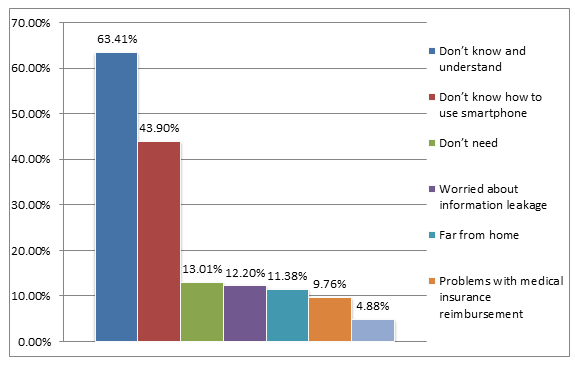
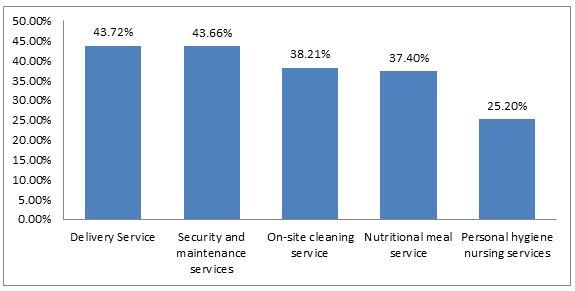
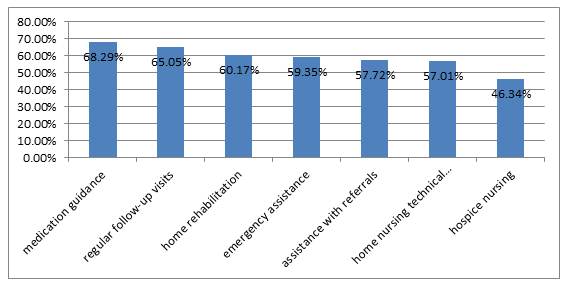
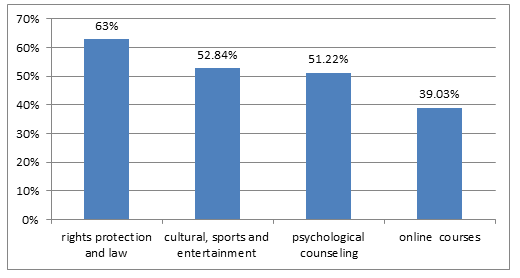
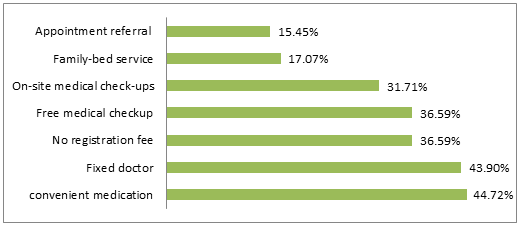

 Impact Factor: * 6.2
Impact Factor: * 6.2 Acceptance Rate: 76.33%
Acceptance Rate: 76.33%  Time to first decision: 10.4 days
Time to first decision: 10.4 days  Time from article received to acceptance: 2-3 weeks
Time from article received to acceptance: 2-3 weeks 